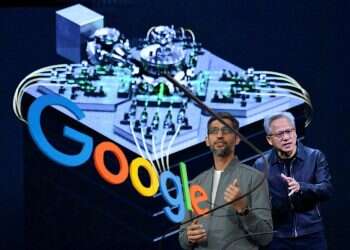Nvidia Corporation rolled out innovative artificial intelligence models and robotics infrastructure tools Monday, headlined by Cosmos Reason – a sophisticated 7-billion-parameter "reasoning" vision language model engineered specifically for physical AI applications and robotic systems, according to TechChrunch.
The AI giant expanded its existing Cosmos world model collection with Cosmos Transfer-2, designed to accelerate synthetic data generation from 3D simulation environments or spatial control inputs, alongside a streamlined version of Cosmos Transfer optimized for enhanced speed performance.

During the SIGGRAPH conference presentation Monday, Nvidia explained these models serve to generate synthetic text, image, and video datasets essential for training robots and AI agents, sources familiar with the announcement told TechCrunch.
Cosmos Reason enables robots and AI agents to perform reasoning functions through integrated memory and physics comprehension capabilities, allowing the system to "serve as a planning model to reason what steps an embodied agent might take next," according to the company. The application extends to data curation, robot planning, and video analytics functions.

The semiconductor manufacturer simultaneously introduced neural reconstruction libraries, incorporating rendering technology that enables developers to simulate real-world environments in three dimensions using sensor data. This rendering functionality integrates with CARLA, a widely-used open source simulator platform, while Nvidia also announced updates to its Omniverse software development kit.
Hardware infrastructure received equal attention with new server solutions tailored for robotics workflows. The Nvidia RTX Pro Blackwell Server provides unified architecture for robotic development workloads, complemented by Nvidia DGX Cloud, a cloud-based management platform for streamlined operations.
These developments represent the semiconductor leader's strategic expansion into robotics applications as it pursues new market opportunities for its AI graphics processing units beyond traditional AI data center deployments.




